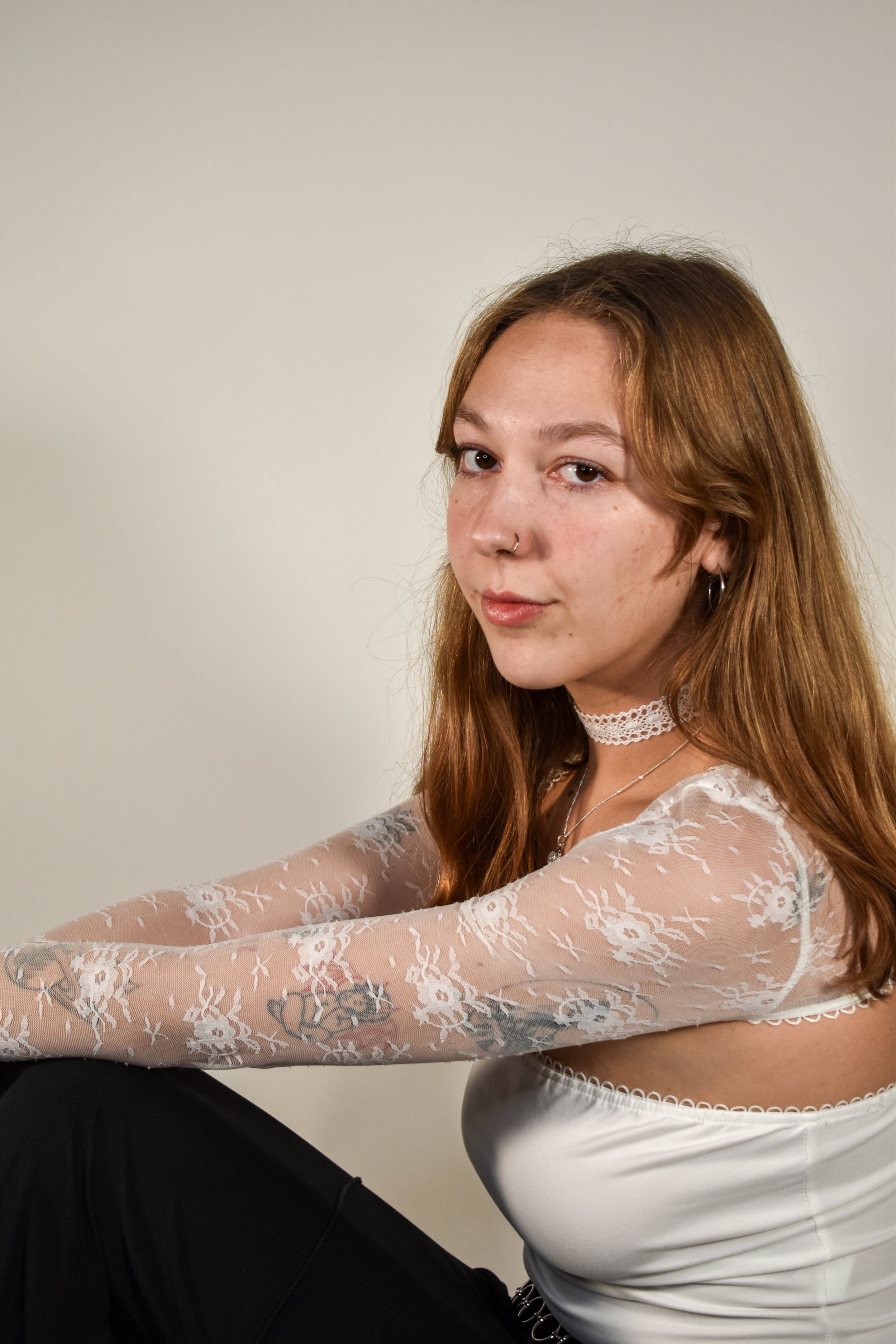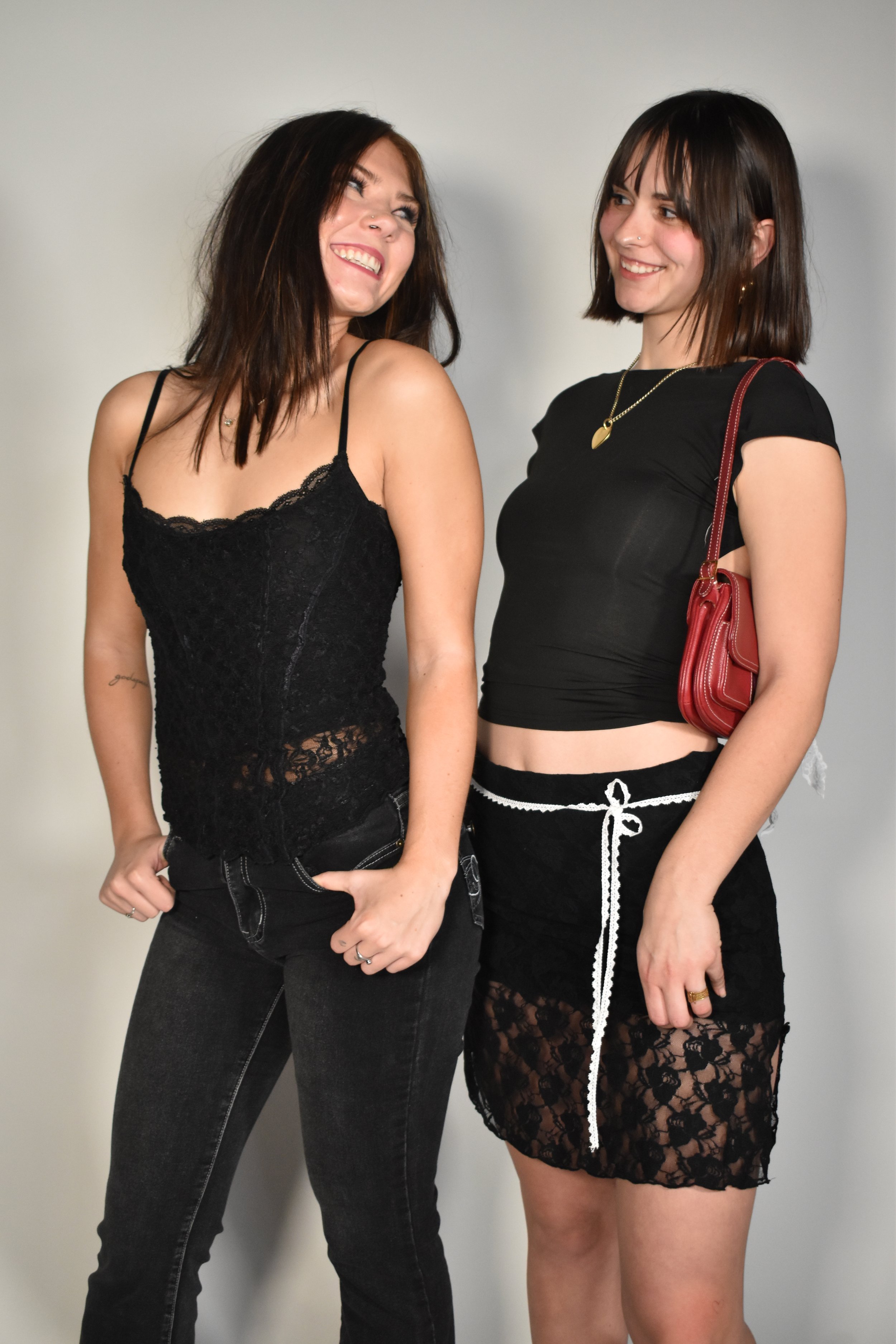The Long-Lasting Timeline of Lace
Written By Ashlyn Sorrells
Photographed By Kadence Schaecher
Modeled By Alex Ring, Alexis Stutte, Courtney Skorina, & Kya Wilson
In the realm of fashion, we tend to see certain fabrics and patterns that have persistently stayed in style. Lace is one fabric that has withstood many transitional fashion periods and has yet to lose its lasting reputation. Lace is a fabric that can hold many contrasting meanings simply based on the color, pattern, and how it’s worn.
Lace has prevailed in the fashion world and continues to maintain its timeless stature. This sheer cloth first became popular in Europe during the 16th century. Lace wasn’t made out of cotton until the 19th century—before this, linen, silk, and gold threads were used to create lace. Constructing lace used to be a more complex process than it is now, which contributed to its luxury status in the fabrics’ early years. Typically, people of high status were the only wearers of this weblike fabric: “Members of royalty, the aristocracy, and the Catholic Church were the main consumers for fine laces.” Both men and women, at this time, were consumers of this fabric. However, men stopped wearing lace and the fabric was more frequently made by machine, which were main causes of its decline in desire. Because of this, lace became more affordable during the 19th century which increased its popularity among common people.
Depending on the color of the lace along with where and when it is worn, the fabric can signify many different presumptions. White lace has historically projected the idea of “innocence and purity,” this being the basis behind the common use of white lacy materials for wedding dresses and veils. In contrast, black colored lace naturally projects the opposite ideas. Lace clothing items, mostly consisting of black lace, are being incorporated into quintessential night-life attire. Both black and white lace fabric, along with colors such as pinks and reds, are currently worn in all different types of settings.
Clothing items created out of lace fabric can fit many different styles and aesthetics. Lace tops, whether they are long sleeve, tank top, corset style, or even just short sleeve, have endless possibilities when it comes to styling. Depending on the cut and color, lacy tops pair well with most pant and skirt styles. Pairing these tops with a basic black mini skirt is always a go-to, of course. Certain lace clothing items also have the potential of being a new cherished layering piece. Donning a long lace skirt overtop another solid colored skirt adds a fun pop of color to the ensemble, while maintaining a modest look. Lace patterned tights or long socks can add more excitement and detail to a rather muted look. Lace ribbon used as neck attire, laced through a pair of sneakers, or even most simply, tied into bows at the ends of pigtail braids, are a few small ways to add depth and intricacy to an outfit.
The fact that lace has stayed in style this long is quite telling of its aesthetic beauty. Garments and accessories constructed out of lacy material are timeless pieces that I believe belong in any closet. Because there are so many different color and design options, it has the ability to fit any and all aesthetics. This fabric is not only versatile and easy to style, but it also brings in texture variety and creates needed contrast in a simple look. I believe any outfit could use a little lace—and I challenge you to take on this simple task!








